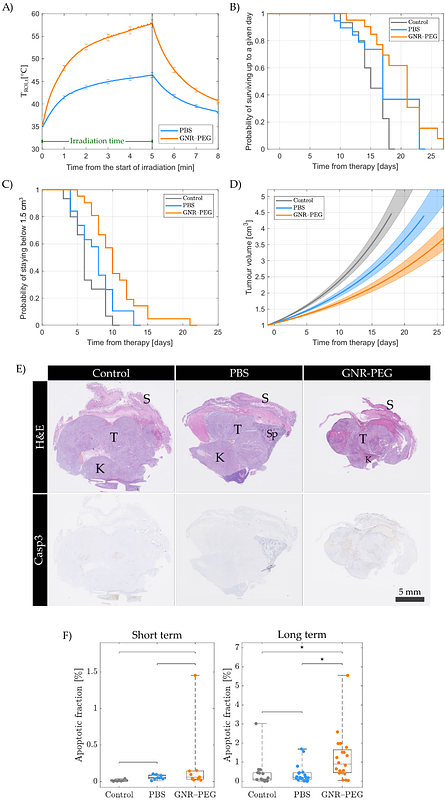A Toolbox for the Personalization of Plasmonic Photothermal Therapy in Orthotopic Mouse Tumor Models

A Toolbox for the Personalization of Plasmonic Photothermal Therapy in Orthotopic Mouse Tumor Models
Fernandez Esteberena, P. R.; Vilches, C.; Morales-Dalmau, J.; Mireles, M.; Martinez-Lozano, M. d. M.; de Miguel, I.; Casanovas, O.; Quidant, R.; Durduran, T.
AbstractThe clinical translation of plasmonic photothermal therapy is hindered by a lack of reliable personalization protocols. In this study we implemented a non-invasive toolbox to assess how tumor optical and hemodynamic properties can serve as markers of progression and be used in personalized simulations to extrapolate therapy conditions, both necessary steps for individualized treatment planning. The toolbox integrated near-infrared diffuse optical monitoring techniques, thermal imaging, ex vivo assays and physical simulations. It was applied to patient-derived orthotopic clear cell renal cell carcinoma mouse models, at 1 cm3 volumes, providing clinically more relevant conditions than those of commonly used models. Gold nanorods (GNRs) with absorption tuned to the optical window and fixed irradiation conditions were employed. Therapy safety and efficacy were established using standard methods and pre-GNR injection, pre-therapy and post-therapy measurements obtained with the toolbox were analyzed to model therapy progression. Results revealed an association between tumor water concentration and accumulated GNR fraction in the tumor, a correlation between the pre-therapy tumor absorption coefficient and the maximum skin temperature reached, and a link between simulated treated volume estimates and progression-free survival, among other findings. These results demonstrate the capabilities of optical measurements to model the outcome and explain the mechanisms involved in the therapy, advancing towards a personalization strategy.